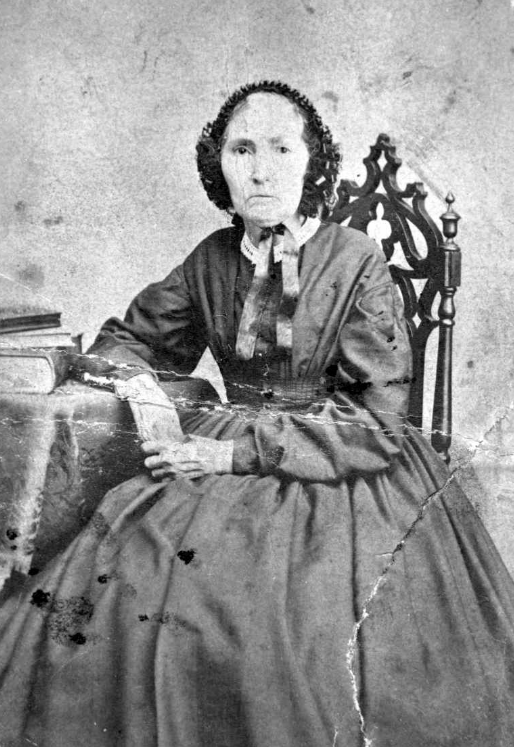Asay Creek – A Hatch Connection
Asay Creek sits just south of Hatch. In this video we explain how Asay Creek was founded and its connections to Hatch.
Like all our pioneer ancestors who came to Utah the Joseph Asay family had a journey from place to place within Utah before finding their final destination. The video explains the travels of Joseph and Sarah Asay:
Just as their journeys are unique, so too are the individual experiences.
Joseph Asay followed a path of many men – men like Joel Hills Johnson and Edwin Westover. He was called again and again to uproot his family and settle somewhere new. Like them, Joseph Asay did it to benefit “building up the Kingdom”. It was always an act of faith.
Too often, the story of the women and their efforts and sacrifices are overlooked. Yes, they went with their men but often they were called upon to do more and extend themselves in new ways. For Sarah Asay, Damon’s 6th great grandmother, it was no different.
After arriving in Salt Lake, and perhaps in anticipation of the needs in the remote areas they would be sent to, Sarah was sent to be trained as a midwife. While Joseph and his sons labored on 140 acres in present-day South Jordan, Sarah went to school.
They were sent to the Muddy Mission – a notoriously unpopular destination as part of the Cotton Mission. It was unpopular because it was located “south of Hell” (some 80 miles south and west of St. George).
Led by Joseph Young, one of Brigham’s sons, it was hoped that the Muddy Mission would yield regular crops of cotton that could then be sent up the Colorado River.
The Asays went there as assigned and gave it their best. They were famously reported having met explorer John Wesley Powell as he was heading south on the Colorado towards the Grand Canyon:
Joseph Asay and two of his sons were fishing and hailed them to shore. Powell and his men were elated to see the three and were soon greeted as conquering heroes by the nearby settlers who knew of their voyage of discovery and were watching for them.
As the Asays prepared a supper of humpback chub, squash and corn, a messenger rode to nearby St. Thomas to let the settlers know the party arrived. Powell noted in his journal the hospitality he and his crew received:
They arrived about sundown, Mr. Asay treated us with great kindness, to the extent of his ability; but Bishop Leithead brought in his wagon two or three dozen melons and many other luxuries (cheese, bread, and butter, which we had not tasted for months) and we were comfortable once more.
Powell and his men rested and reprovisioned at St. Thomas for two days before continuing on their journey through to St. George to Salt Lake City, before returning to the east coast. Powell went on to become director of the U.S. Geological Survey. It was Powell who named Glen Canyon and for whom Lake Powell is named.
The Muddy Mission was a miserable place to live. It received little water, despite it’s name, and growing things there were difficult because of short growing seasons and the constant lack of water. When Brigham came to visit in 1870, when the picture below was taken, he admitted defeat and advised the settlers to move to Long Valley, which was north of Kanab.
So move they did, settling Mt. Carmel with several other Muddy Mission pioneers. The adult children of Joseph and Sarah spread out. Issac went to Orderville, Jerome stayed in Mt. Carmel.
Joseph wandered, concerned the same problems experienced in the Muddy Mission would duplicate themselves in Mt. Carmel and sounding areas.
He ventured north and found a garden spot he took to calling Asay Creek. He knew that at an elevation near 7000 feet it would still be difficult to grow crops but the lush meadow near this tiny tributary of the Sevier River would allow cattle to flourish and that the mountains to the west would yield timber. Tapping the experience and resources of a partner, they opened a saw mill to the west, powered by water by streams flowing from the mountain.
Issac and Jerome would make Asay Creek home to their families for the duration, raising their families there for more than 25 years. Jerome petitioned for a post office for Asay and it served all the neighboring communities for several years. But when the saw mill burned down in the late 1890s Asay Creek started to die and even those of the Asay family moved to Hatch or other areas.
When Joseph died in 1879 in Mt. Carmel Grandma Sarah Asay returned to Asay Creek for most of the rest of her life. She gained a great deal of respect as the area’s midwife and she continued to serve the community in that capacity for many years before she passed in the late 1890s.






Leave a Reply
Want to join the discussion?Feel free to contribute!